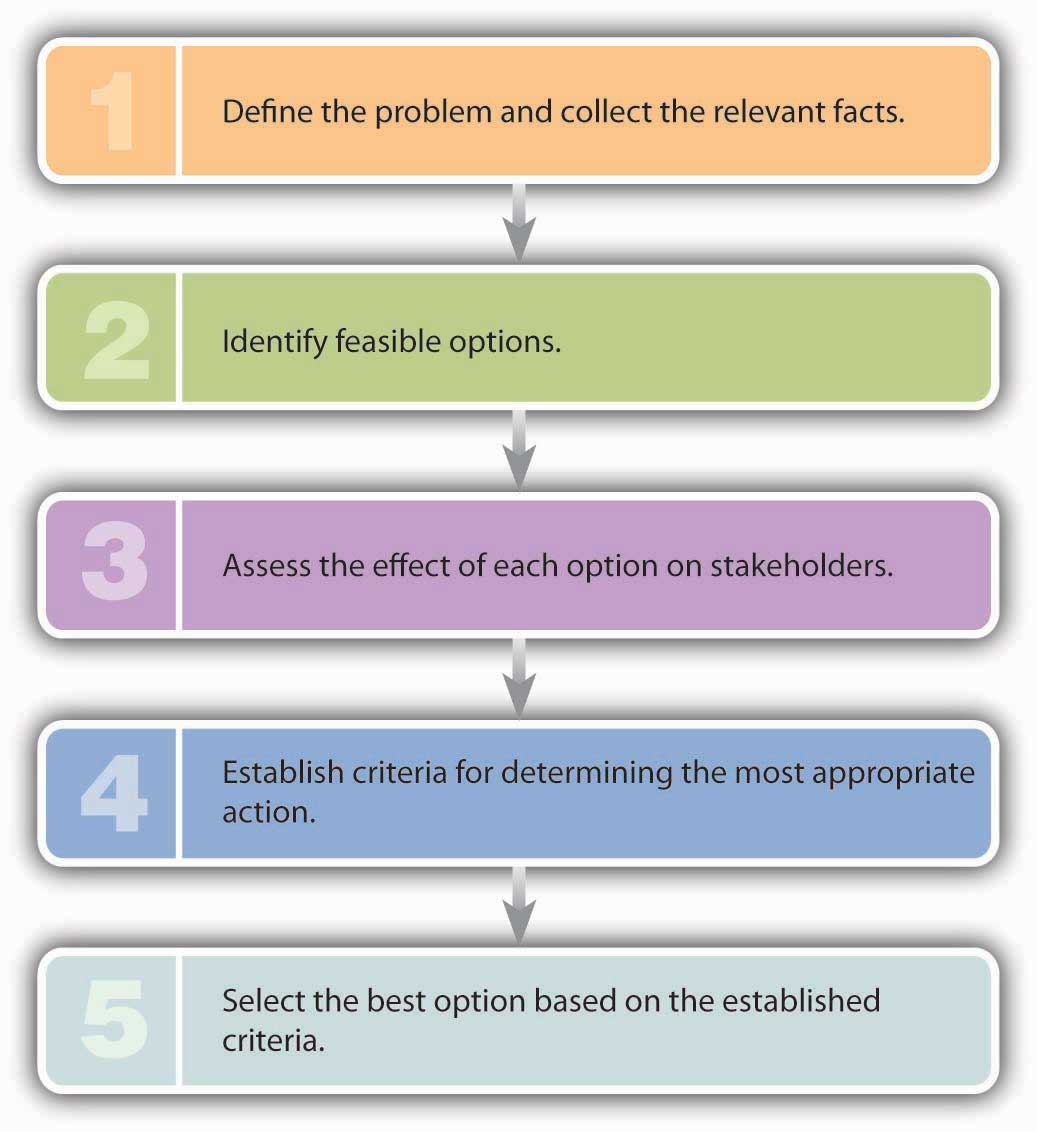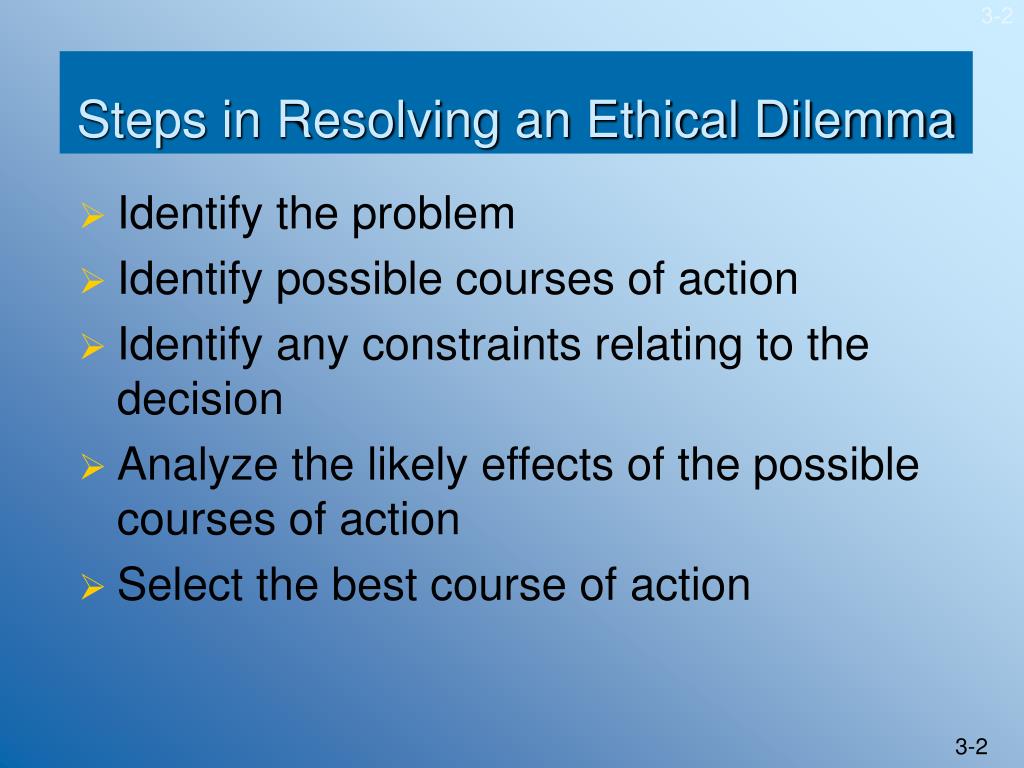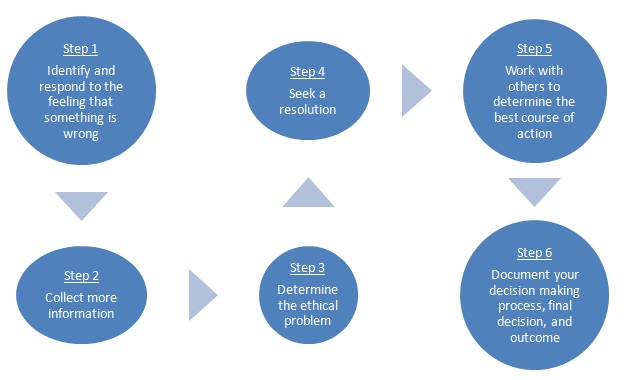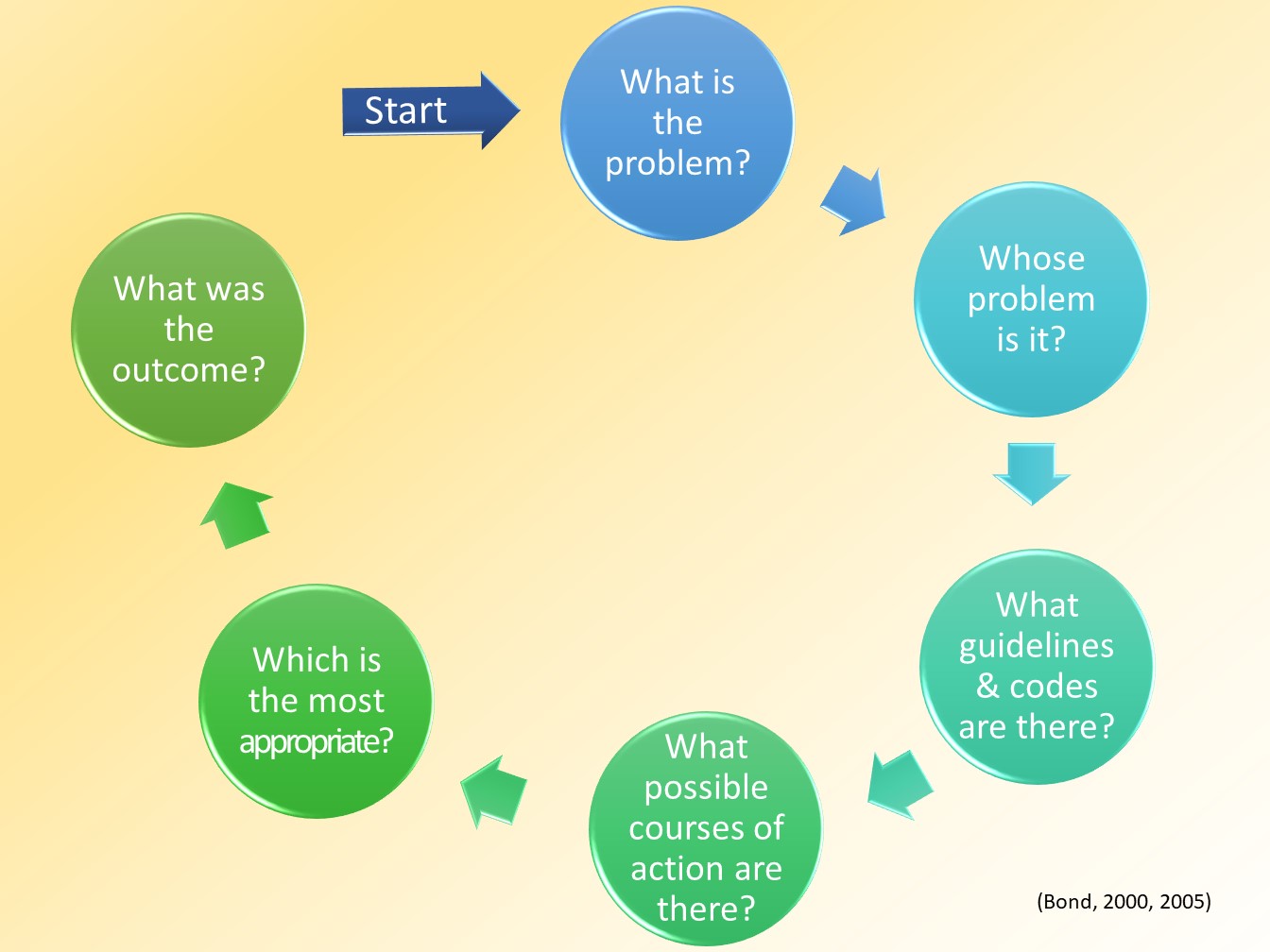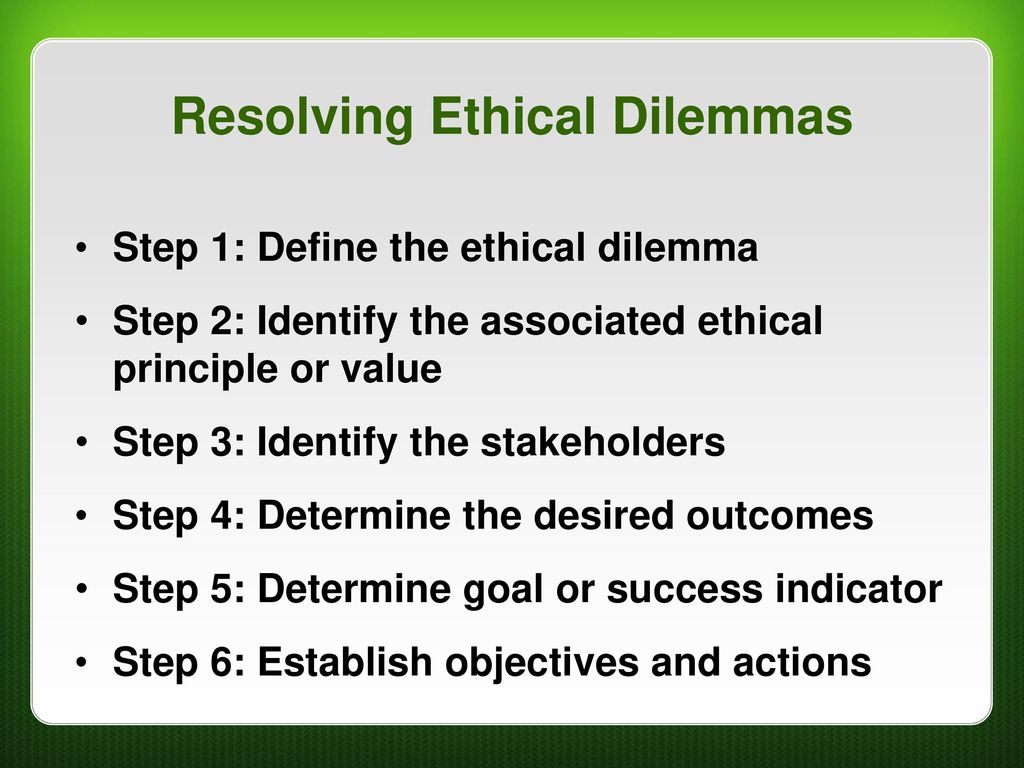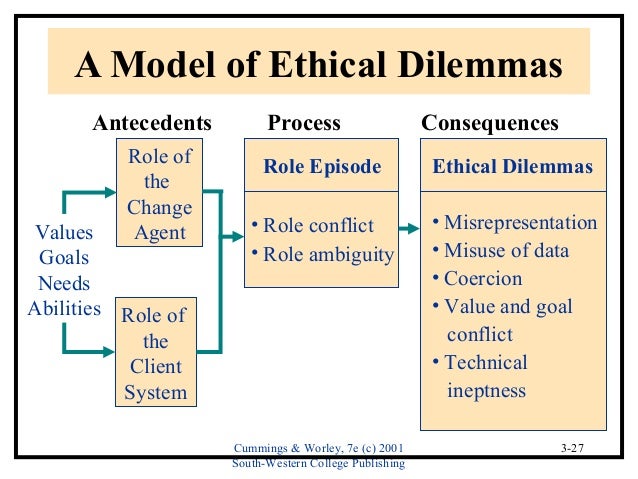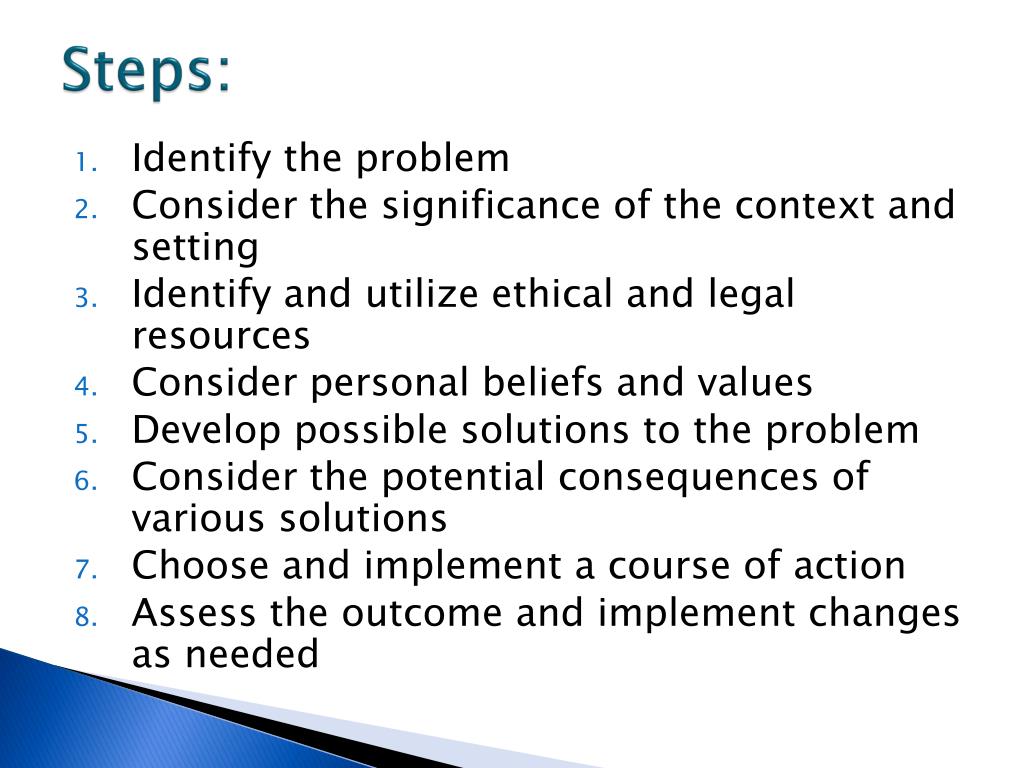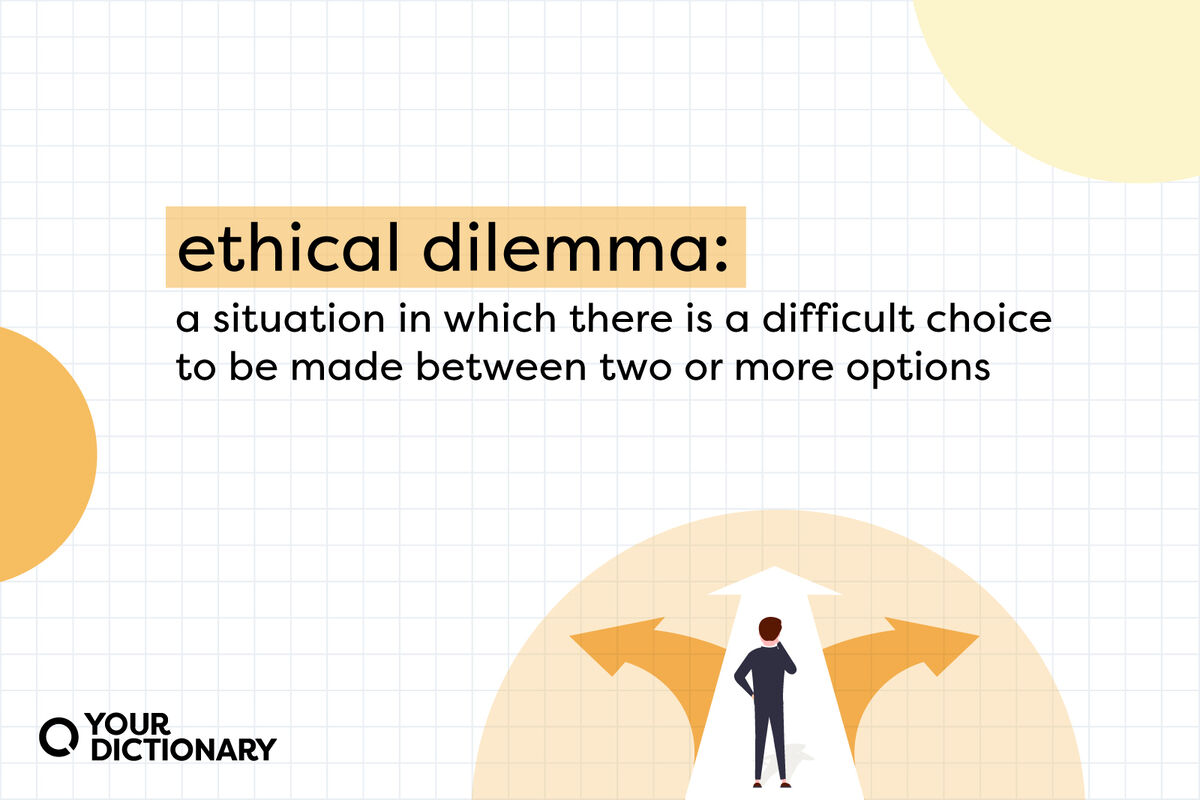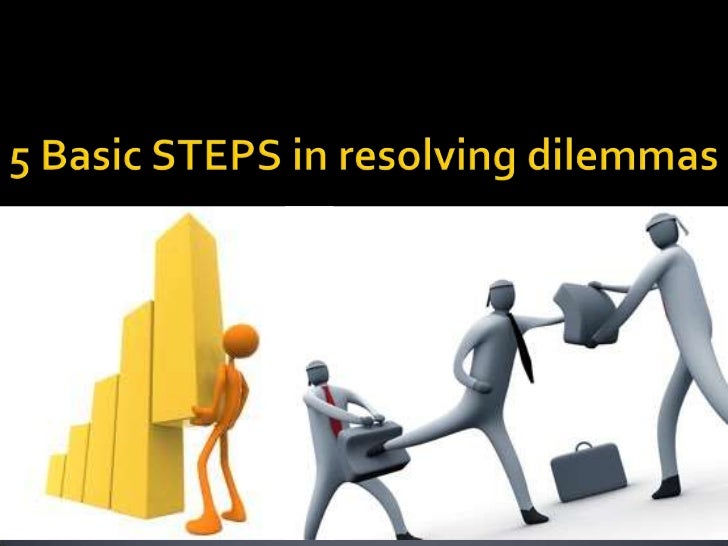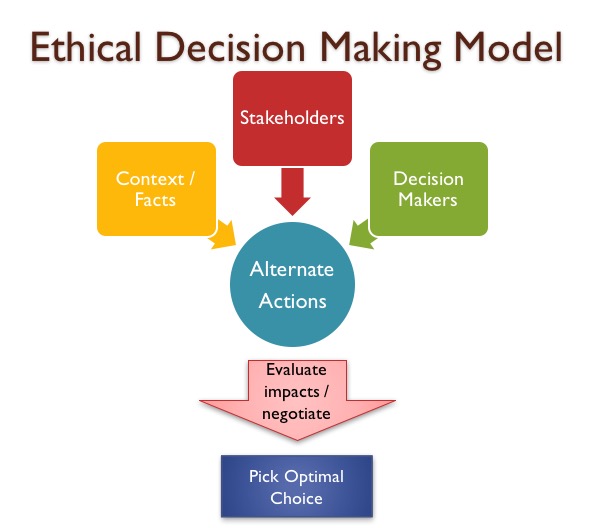The Three-step Approach To Solving Ethical Dilemmas Is Based On

Imagine a bustling hospital hallway, the air thick with the scent of antiseptic and hushed anxieties. A doctor stands hunched over a chart, brow furrowed in contemplation. A nurse waits patiently, a question hanging in the air. The dilemma: how to proceed with a treatment plan where the patient's wishes clash with what the medical team believes is best.
This scenario, familiar across countless professions, underscores the critical need for a clear, ethical framework. At the heart of navigating such complexities lies a well-defined, three-step approach, based on principles of moral philosophy and practical reasoning, designed to provide a pathway toward just and compassionate resolutions.
The Foundation: A Brief History of Ethical Decision-Making
Ethical decision-making isn't a new concept. Philosophers like Aristotle and Kant have wrestled with moral quandaries for centuries, laying the groundwork for modern ethical theories.
These early thinkers emphasized concepts like virtue, duty, and consequences, providing a rich tapestry of ideas from which contemporary ethical frameworks draw inspiration. Over time, these abstract concepts were refined and adapted for practical application in various fields, from medicine and law to business and technology.
The Three Steps Unveiled
The three-step approach provides a structured method for navigating ethical dilemmas. Each step builds upon the previous one, promoting careful consideration and minimizing the risk of rash judgments. It's a tool designed for clarity and thoughtful action.
Step 1: Identifying the Ethical Issue
The first, and arguably most crucial, step is to clearly identify the ethical issue at hand. This involves pinpointing the conflicting values, principles, or interests that are creating the dilemma.
It requires a careful examination of all the facts, stakeholders, and potential consequences. For example, in the hospital scenario, the conflict might be between the patient's autonomy (their right to choose their treatment) and the medical team's beneficence (their duty to do what they believe is best for the patient's health).
Step 2: Analyzing the Options
Once the ethical issue is identified, the next step involves analyzing the various options available. This isn't simply about listing potential actions; it's about carefully weighing the pros and cons of each option in light of the relevant ethical principles and values.
Different ethical frameworks can be used to inform this analysis. Utilitarianism, for example, focuses on maximizing overall happiness, while deontology emphasizes adherence to moral rules and duties. Considering these different perspectives can help illuminate the potential consequences of each option and identify potential conflicts of interest.
Step 3: Making a Decision and Justifying It
The final step is to make a decision and be prepared to justify it. This is where the rubber meets the road, requiring courage, integrity, and a commitment to ethical principles. The chosen course of action should be one that can be defended logically and ethically, even in the face of criticism or disagreement.
It's also important to document the decision-making process, outlining the rationale behind the chosen course of action and acknowledging any potential drawbacks. Transparency and accountability are key to maintaining trust and credibility.
Significance and Applications
The three-step approach has broad applicability across various fields. In business, it can help companies navigate ethical challenges related to environmental sustainability, fair labor practices, and consumer privacy.
In education, it can guide teachers and administrators in addressing issues of academic integrity, student safety, and equitable access to resources. In government, it can inform policy decisions related to public health, social welfare, and national security.
Organizations like the Markkula Center for Applied Ethics at Santa Clara University have championed similar frameworks, providing resources and training to help individuals and organizations navigate ethical dilemmas effectively. Their work highlights the growing recognition of the importance of ethical decision-making in all aspects of life.
Looking Ahead: Embracing Ethical Consciousness
The three-step approach is not a magic bullet. It doesn't guarantee perfect outcomes, nor does it eliminate the inherent complexities of ethical decision-making. However, it provides a valuable framework for navigating these complexities with greater clarity, compassion, and integrity.
By embracing ethical consciousness and cultivating a commitment to thoughtful decision-making, we can create a more just and equitable world, one ethical choice at a time.
